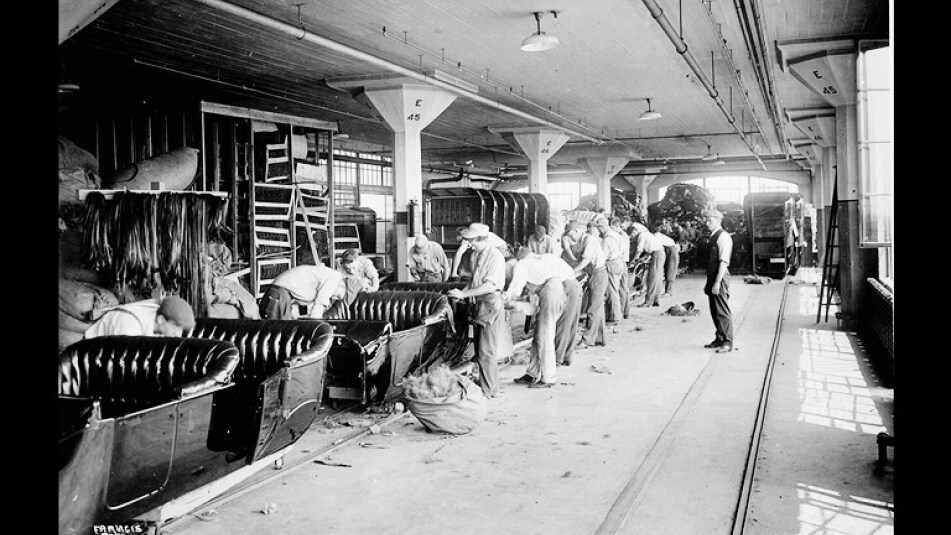In September of 1907, Henry Ford purchased a 130-acre tract of land in Highland Park, Michigan where Ford Motor Company would build the factory that helped to put the world on wheels. This assembly plant was designed by renowned architect Albert Kahn, and was nicknamed the “Crystal Palace” for its many glass windows in the roofs and walls. Construction of the 60-acre plant began in 1908, and vehicle production was moved from Ford’s Piquette Street (Detroit) plant in 1910.
The moving assembly line for automobiles was first operated in Highland Park in October of 1913, and production of Model Ts at the plant went from hundreds a day to thousands a day. As a result, the price of a Model T was reduced from $850 to $260, allowing the average working family to afford one. After Henry Ford instituted the $5 day wage increase in 1914, Highland Park’s employment rose to a peak of almost 70,000 in 1925.
Construction on the site continued to include a powerhouse, a foundry, a cold-press building, a machine shop, and an administration building. By the late-1970s, the site had grown to about 20 structures encompassing roughly 3 million square feet of floor space. In addition to 1 million Model Ts, products assembled at Highland Park include tractors, buses, trucks, aircraft parts, rockets, helmets, engines and interior trim parts.
Ford sold the Highland Park plant in October of 1981, but continues to lease space there for storage even today.

